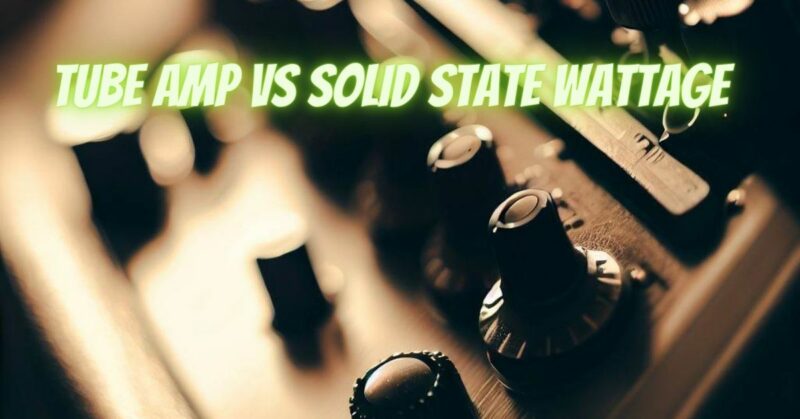When it comes to amplifiers, wattage is a critical factor that influences both the sound and performance of your audio setup. Tube amplifiers and solid-state amplifiers are two popular choices with distinct characteristics, and understanding the differences in wattage between them can shed light on their respective strengths and applications. In this article, we’ll explore the disparities in wattage between tube amps and solid-state amps, helping you make an informed decision for your audio needs.
Understanding Tube Amps and Solid-State Amps:
- Tube Amps: Tube amplifiers, also known as valve amplifiers, utilize vacuum tubes to amplify audio signals. They are cherished for their warm, rich, and harmonic sound qualities, often associated with classic and vintage tones.
- Solid-State Amps: Solid-state amplifiers employ transistors and semiconductor technology for amplification. They are known for their efficiency, reliability, and ability to provide clean and precise sound reproduction.
Differences in Wattage:
1. Power Output:
- Tube Amps: Tube amps tend to produce lower wattage compared to their solid-state counterparts. A 15-watt tube amp, for instance, can deliver significant volume and tonal characteristics suitable for various applications.
- Solid-State Amps: Solid-state amps can offer higher wattage output, often ranging from 30 watts to several hundred watts. This extra power is valuable for larger venues and situations where more volume is required.
2. Saturation and Compression:
- Tube Amps: The unique sound characteristics of tube amps become more pronounced as you push them to their limits. As you increase the volume on a tube amp, it reaches a point of natural compression and saturation, contributing to the “crunch” and “overdrive” tones that many musicians love.
- Solid-State Amps: Solid-state amps provide a clean and linear sound even at higher volumes. While some solid-state amps offer built-in distortion and overdrive effects, they might not replicate the same natural tube amp saturation.
3. Headroom:
- Tube Amps: Tube amps often exhibit dynamic headroom, meaning they handle volume increases more gracefully, resulting in a smoother transition from clean to overdriven tones.
- Solid-State Amps: Solid-state amps can sometimes have a “hard clipping” characteristic when pushed to their limits, leading to a more abrupt transition from clean to distorted tones.
4. Tonal Coloration:
- Tube Amps: Tube amps can impart a certain coloration or “warmth” to the sound due to their harmonic distortion characteristics. This can be desirable for certain genres and styles.
- Solid-State Amps: Solid-state amps tend to provide a more accurate and neutral sound representation, which can be preferred for applications where transparency is crucial.
Choosing the Right Wattage:
- Tube Amps: If you value vintage tones, natural compression, and nuanced dynamic response, a lower-wattage tube amp can be ideal for smaller venues, studios, and situations where tonal character matters.
- Solid-State Amps: If you require higher volume levels, cleaner tones, and consistent sound reproduction, a solid-state amp with higher wattage might be more suitable for gigs, larger stages, and performances where power is crucial.
The differences in wattage between tube amps and solid-state amps reflect the unique sonic qualities and applications of each type of amplifier. Consider your musical style, performance needs, and tonal preferences when deciding between the two. While tube amps offer distinct warmth and dynamic response at lower wattages, solid-state amps excel in providing clean and powerful sound reproduction at higher volumes. Your choice ultimately depends on the sonic landscape you want to explore and the environments in which you’ll be sharing your music.


